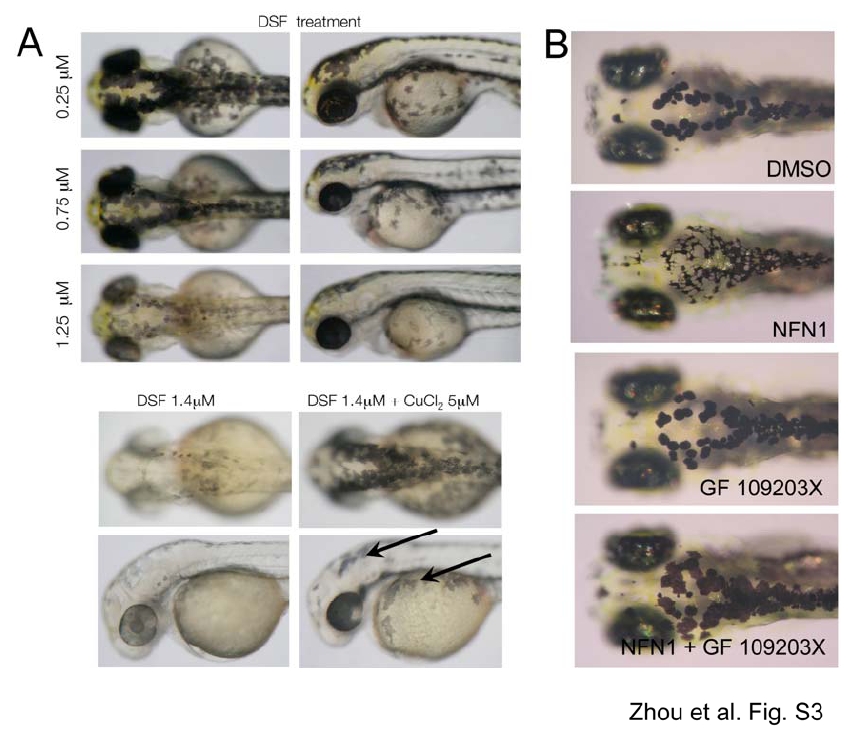Fig. S3
Chemical control of the ALDH2-PKC pathway in zebrafish . A. Two-day old embryos treated with low doses of DSF maintain pigmentation (top panels). Loss of pigmentation in DSF treated embryos can be restored with copper (lower panels). Pigmented melanocytes are indicated (arrow). B. The PKC inhibitor, GF 109203X prevents NFN1-induced phenotypes. Zebrafish embryos grown at 28.5°C for 2 days and treated with NFN1 for 24 hours in the presence of DMSO, NFN1, GF 109203X (Enzo Life Sciences, UK) or NFN1 and GF 109203X (n=40). Co-treatment with 20μM GF 109203X prevented NFN1 activity in 35/40 treated embryos. Experiments were repeated four times. C. Daidzin alters background adaptation in zebrafish embryos. (Left) Images of fixed zebrafish embryos (5 dpf) treated with 0.1% DMSO or 10 μM daidzin, and shifted from a dark environment to a light environment (light), or vice versa (dark). The average percentage of melanin coverage (within the area indicated by red dotted outline) for each treatment condition ± standard deviation is indicated. (Right) Box plot of melanin coverage (y-axis) for each embryo in different treatment conditions (x-axis). Individual values taken from one of three experiments are shown as red circles. The box depicts the lower quartile and the upper quartile, with the median depicted by the intersecting line. Whiskers extend between the minimum and maximum of all the data. In DMSO treated embryos, melanocytes are significantly contracted in the light and expanded in the dark (P<0.001, n=20 for each condition); one-way analysis of variance (ANOVA), [mean and 95% confidence interval of differences; 11.081(5.966,16.195)]. Zebrafish treated with daidzin contract their melanin in response to light environment, but do not significantly expand their melanin in response to dark environments [95% CI 0.563(-4.552, 5.677)]. The experiment was repeated three separate times with embryos at 5 dpf (n=5-20 embryos per condition) and once at 4 dpf (n= 10 embryos per condition).

